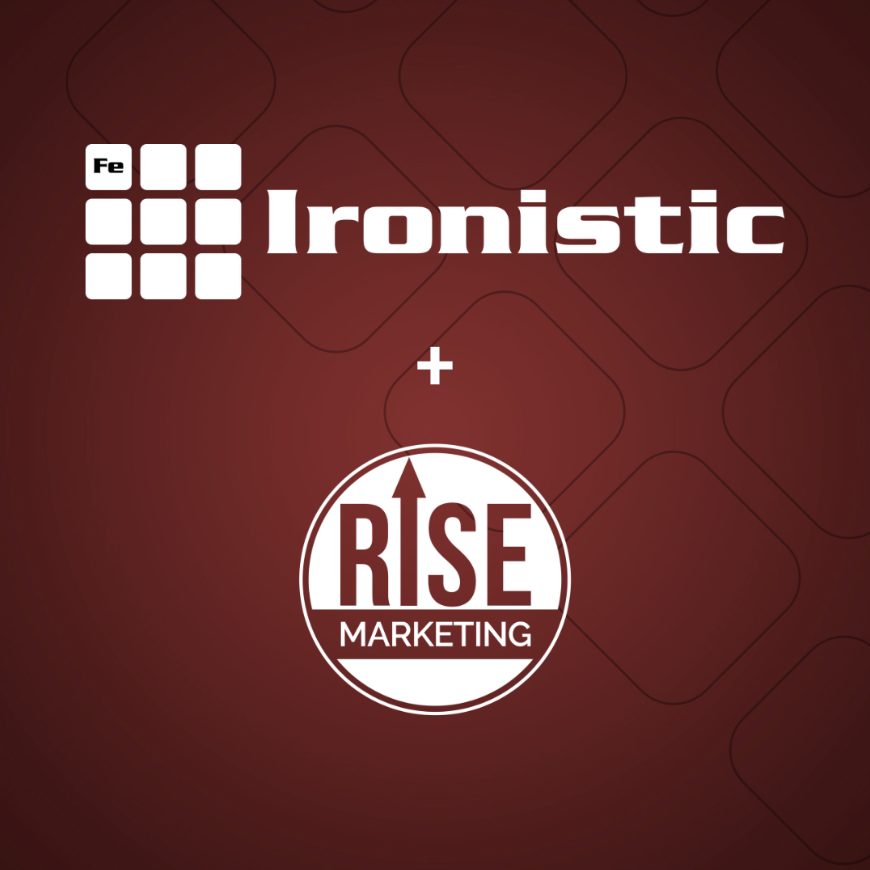
RISE Marketing Joins with Ironistic to Extend Marketing Communications Service Offering
Explore the difference between style guide vs. brand guide, what to include in each, and why you need both for…
Read More
When you look up the world’s most valuable brands, you’ll find that their logos are immediately recognizable and familiar. This is no coincidence. Whether it’s Apple, Google, Amazon, Disney, or Starbucks – their brand’s style has been carefully developed and consistently applied across all products, media, platforms, and campaigns. And the majority of their consumers are loyal. Have you seen the drive-thru lines at a Starbucks lately? Or the frenzy outside Apple stores when a new iPhone drops? We’re pretty sure most of us would be happy with a percentage of that success and loyalty. But it takes work.
For any business, whether you’re a mega global dominator like Amazon or a mom-and-pop on America’s Main Street, you need a brand identity. If you don’t have one yet or it’s only mildly developed – what are you waiting for?
Consistent branding is a key component in an organization’s measurable success. We’ll tell you the difference between a style guide vs. a brand guide, and what needs to be included in each of them. And if you still have questions at the end? Well, that’s what we’re here for. First, let’s get into some of the key reasons why branding is important.
In the world of communication and design, two terms get tossed around quite a bit: style guides and brand guides. While they both play a crucial role in maintaining consistency, they serve distinct purposes. Let’s break down the key differences to ensure your brand voice rings clear and consistent.
Think of a brand guide as the blueprint for your entire brand identity. It dives deep into the core of who you are as a company. Here’s what you’ll typically find:
The style guide builds upon the foundation laid by the brand guide. It focuses specifically on the written communication aspects of your brand. Here’s what a well-crafted style guide will include:
Think of your style guide like one voice that stands out in a crowd – not a cacophony of variant notes. Because you want everyone in your organization to follow the same music…over and over again until it becomes like the latest earworm that you hear and immediately know the title, artist, album, and lyrics word-for-word. Here’s why:
Consumers like consistency. They respond to it with their wallets and their patronage. Consistent branding, which drives brand recognition, has been shown to increase revenue by as much as 23%.
![]()
Just listen to what our Design Strategist, Sarah Engeset, has to say about it:
“Brand Consistency is key when expanding your brand recognition. Your brand’s look and feel across all digital platforms and print materials helps solidify your position in your market, allowing your target audiences to remember who you are when they need the services you provide.”
Here’s some more insight into brand consistency from our President, Chris Foss:
“As your brand is leveraged in more print and online materials, consistency and accuracy are vitally important – for both your internal and external users. Your staff…are your first brand ambassadors. If you don’t specify how to represent your brand then they can quickly go off-script and multiple versions of your brand and messaging can quickly circulate.
It’s kind of like the telephone game. Imagine playing the telephone game with 10 people, and read them your mission statement. See how it comes out?”
Establishing a style guide not only defines you and sets you apart, it also helps you get things done faster. When your workforce, especially your marketing team, knows exactly what you stand for and how you want to present yourself to the world, then every project and objective can get started on the right foot – without wasting time on redrafts and edits and corrections because something was off visually or in the messaging.

One study showed that loyal customers spend 67% more than newbies. Once you create your branding and begin building brand recognition, people that share your values or buy into your message will develop a connection with your company.
By establishing a style guide that implements the same look, feel, and tone across all your marketing and production efforts, you will increase the quality, integrity, and reliability of your organization. People will be more likely to trust you and stick with you for multiple interactions.
A style guide includes your brand identity, assets, and how to use them or apply them across your products, sales, and marketing efforts. Your brand identity typically includes your mission, values, personality, tone, and even your story – which will talk a bit about later. Your brand assets are things like your logo, iterations of your logo, your color palette, typeface, etc.
Here’s a little insight from one of our front-end developers, David Shayne:
“[It] is always important to lay out strict guides on how certain colors should be used, how the logo should be used, and all the different formats you want to stick to. Having strict control over this is important to establish consistent messaging. If you were to design your logo one way, and then use completely different colors for it in another place, that ultimately hurts your brand and can cause confusion or district with customers.”
So, here are the main elements that should go into your style guide:
 Including your logo design goes beyond just how it looks. You need to dictate sizes in different formats or in relation to other branding assets like taglines or display ads. Outline which colors to use and how they should appear on different backgrounds or in print vs. digital production.
Including your logo design goes beyond just how it looks. You need to dictate sizes in different formats or in relation to other branding assets like taglines or display ads. Outline which colors to use and how they should appear on different backgrounds or in print vs. digital production.
You might also think about including instructions for how your log should not look across different media.
Lay out the colors that make up your brand. You probably don’t want too many colors, but this branding palette should include RGB and CMYK color codes so that it remains consistent between web and print formats.
Establish what typefaces, font sizes, and spacing you want for your brand. Include a hierarchy of font usage too. You should also clarify which fonts to use for titles versus body copy, plus formatting preferences.
Beyond your logo itself, you might have guidelines or what types of other images you should or should not include in marketing materials or on your website and social media platforms. You might only want to use live photo images versus illustrations. You might desire outdoor images, but only of certain topography. You might want images of people, but only in certain settings. These are all important things to think about before you start advertising your message.
Setting your tone is crucial to creating consistent branding. What is your company’s personality? How do you want to come across to everyone every time? The words you use and how your message is conveyed should always keep time with how you want the public to perceive you.
Developing a creative narrative on your company’s inception, its mission, its goals, its progress, and its future can give your team a 3D understanding of your branding, and then help them communicate that throughout your messaging and marketing efforts. This story should also be something that would appeal to your core customers.
![]() Creating a fully-developed style guide and brand guide will not only support your success and help increase clients and sales, it will also make the lives of everyone who works for you so much easier. They’ll have a clear blueprint from which to build – or you can think of it like giving them a paint-by-numbers book. You should get the same result every time.
Creating a fully-developed style guide and brand guide will not only support your success and help increase clients and sales, it will also make the lives of everyone who works for you so much easier. They’ll have a clear blueprint from which to build – or you can think of it like giving them a paint-by-numbers book. You should get the same result every time.
If you still have questions about brand guides and style guides or would like some expert help in creating one, reach out to our team at Ironistic. , reach out to our team at Ironistic. Our people have lots of experience in digital strategy and integrated marketing solutions. We would love to work with you and help you spread your message where it matters most. Let’s make an impact!
Comments
There are currently no responses.